Bibi la Purée 1900
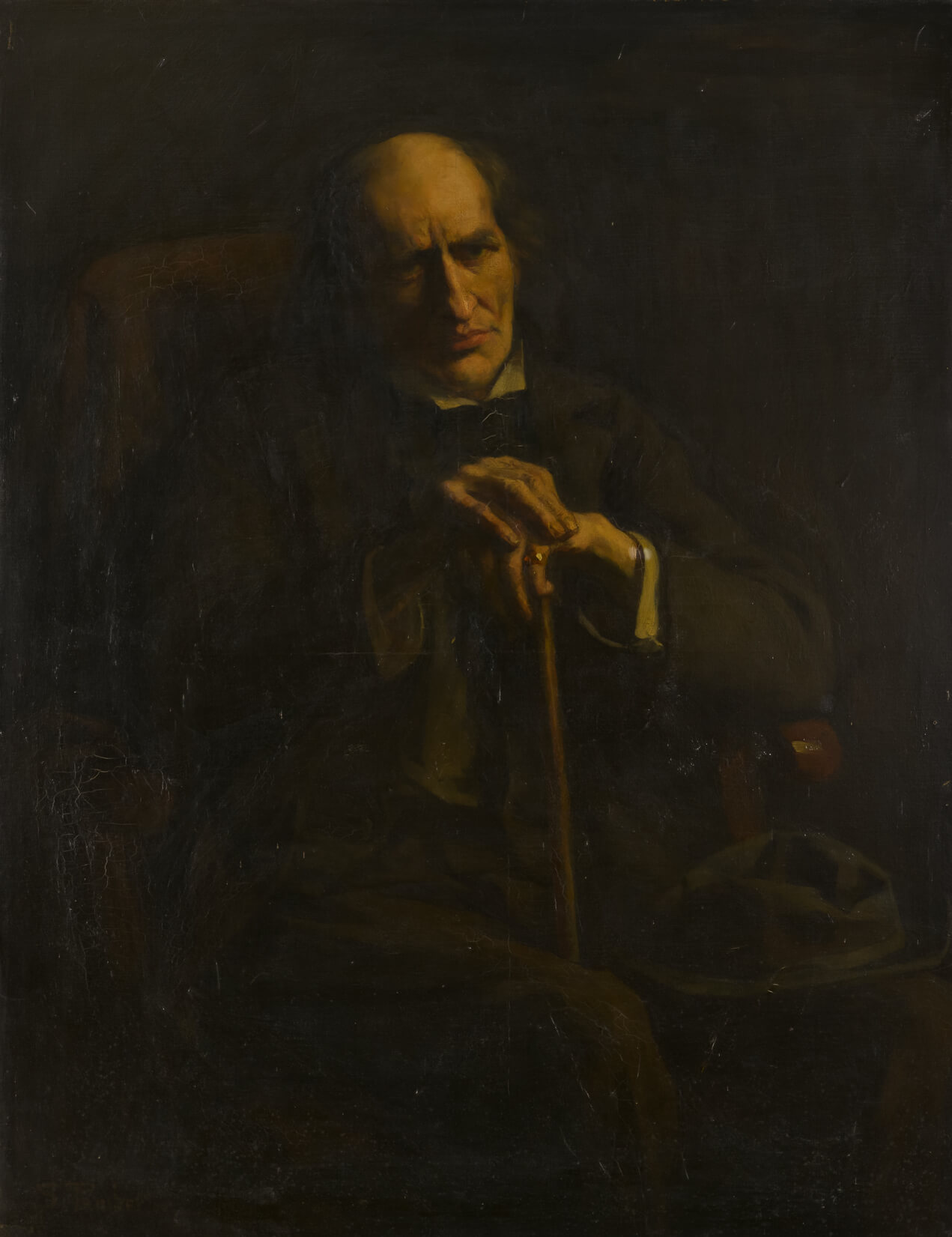
Sophie Pemberton, Bibi la Purée, 1900
Oil on canvas, 116.5 x 89 cm
Art Gallery of Greater Victoria
In this portrait, Bibi la Purée leans forward with an intense gaze, hands crossed, supported by the umbrella he holds. Highly realistic and purposely dark, his face is long with sunken cheeks, yet his eyes are animated and engaged. His receding forehead is illuminated as his body emerges from the shadow, a blue hat almost invisible on his lap, a spotlight on his gnarled hands sporting an incongruous gold ring.
Pemberton first encountered this notorious Parisian, who purportedly looked after the poet Paul Verlaine in 1896 as he lay dying, in the atelier of James McNeill Whistler (1834–1903) in late summer 1899. She even wrote an article about their relationship:
It was at his [Whistler’s] evening class that I first saw Bibi la Purée as model; a little old man, smiling and ecstatic, his bright eyes half hidden under a dingy and weather-beaten top hat: his clothes were green with age; his boots were the elastic-sided ones of the last century, and under his arm was a sheaf of old umbrellas… “a dandy even in his rags.”
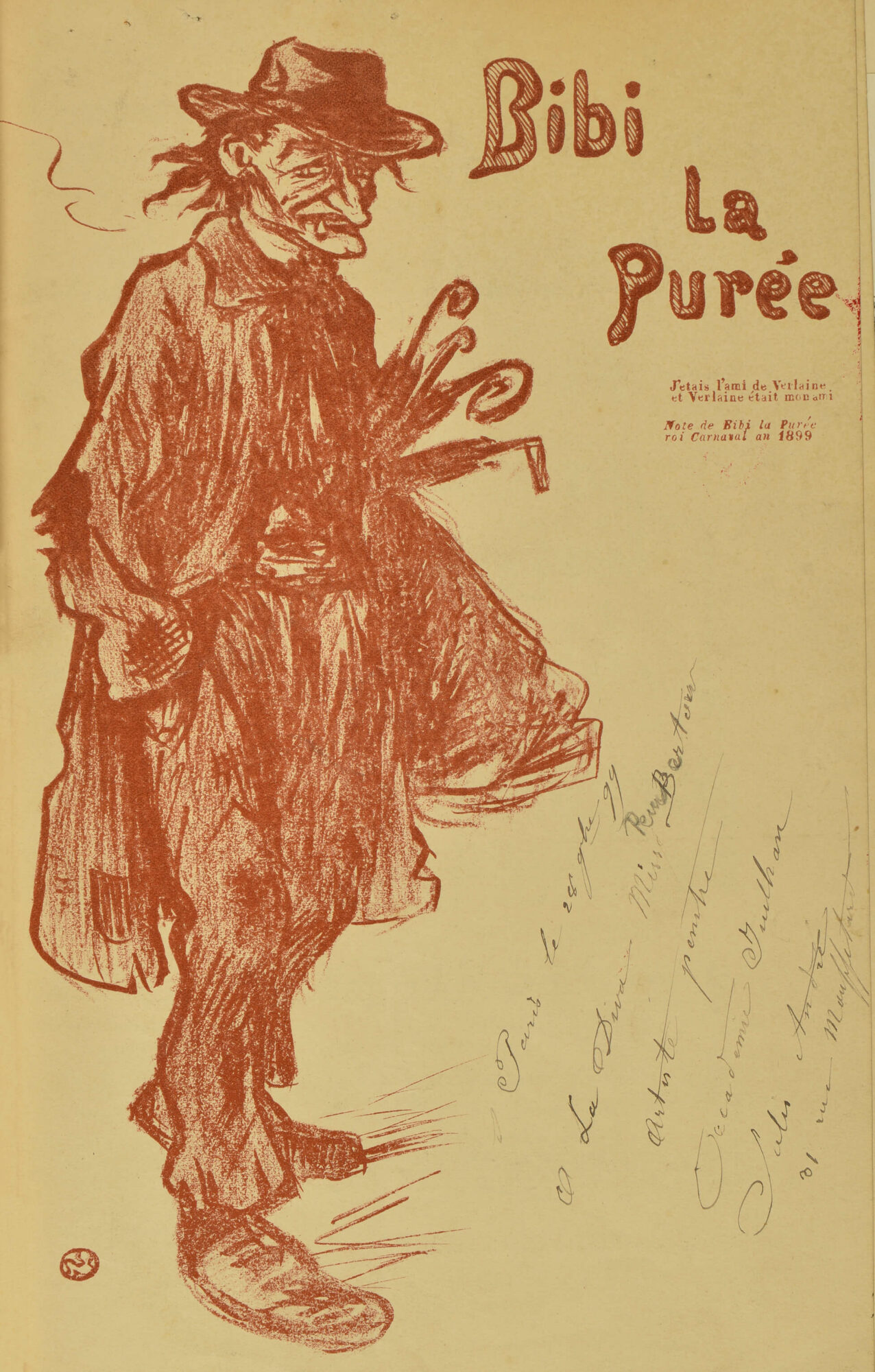
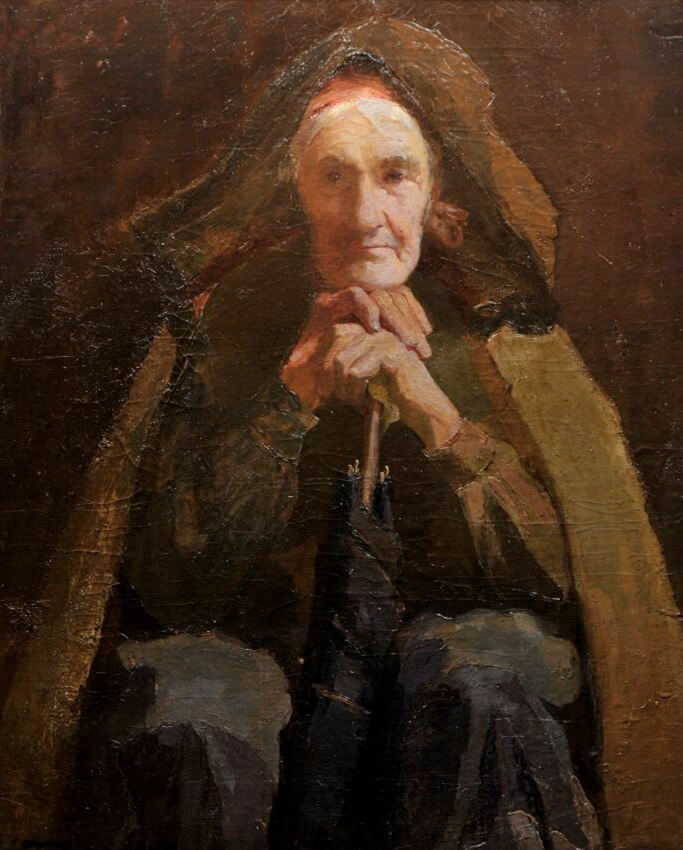
Conceived in the autumn of 1899, nourished by several modelling sessions in which she experimented with variations, and interrupted by her own ill health, Pemberton began to paint the canvas early in 1900. When she finished the portrait, she submitted it to the Paris Salon. “It was hung on the line,” she reported, “and was often surrounded by the students, who knew Bibi. I never saw him again. He died soon afterwards—alone and in misery. But his memory will long live in the Latin Quartier and let us hope that an angel has pressed down the scale for his gentle and unknown deeds.”
When Pemberton submitted the portrait to the Royal Academy of Arts in 1904, it was exhibited as Verlaine’s Friend. One writer singled it out for its polished style: “Miss Pemberton has evidently studied in the French realistic school, to which she certainly does credit.” “‘Verlaine’s Friend’ is quietly impressive,” wrote the Illustrated London News; “few portraits in the Exhibition show a stronger individuality…. [it] presents a noble face charged with melancholy thought, excellently painted.”
Pemberton kept the painting herself and brought it with her to Victoria in 1949, but it was not exhibited again until 1967. In 2019 extensive conservation work to both the painting and the frame rejuvenated the portrait of Bibi for future generations to appreciate.
Da Vinci’s quote, “A good painter has two chief objects to paint; man and the intention of his soul,” inspired and challenged Pemberton over the years. Perhaps she saw in Bibi la Purée the potential to capture a poignant moment and to celebrate strength of character. Florence Carlyle (1864–1923) had accomplished that goal in La vieille Victorine, 1893, exhibited the following year at the Paris Salon where Pemberton could have seen it. It was also at the Art Association of Montreal in 1895, the same year Pemberton exhibited there. There are obvious similarities in composition between these two paintings.

 About the Author
About the Author
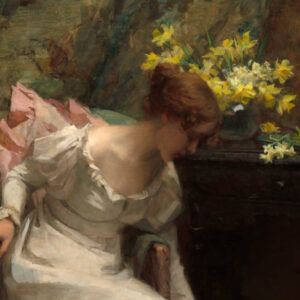 More Online Art Books
More Online Art Books
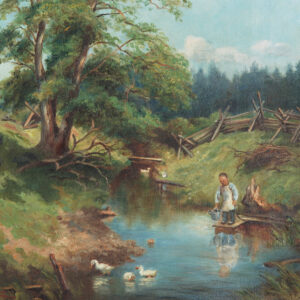 Acknowledgements
Acknowledgements